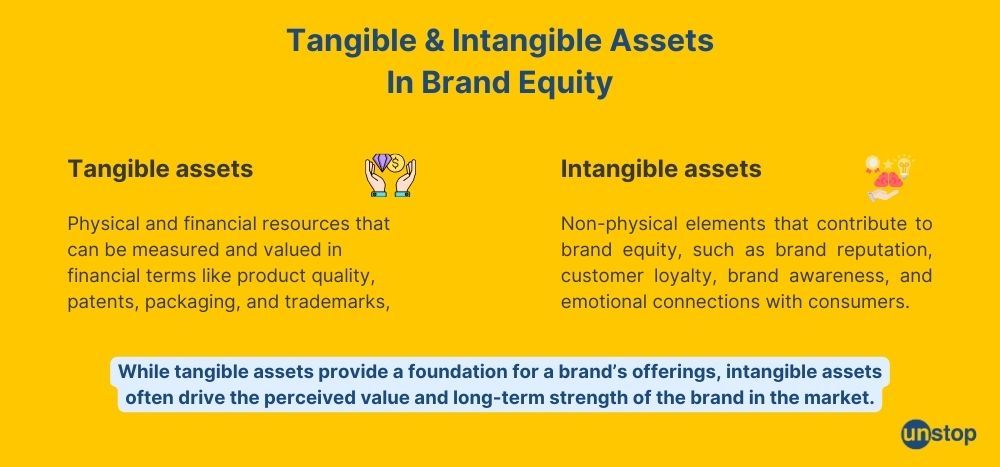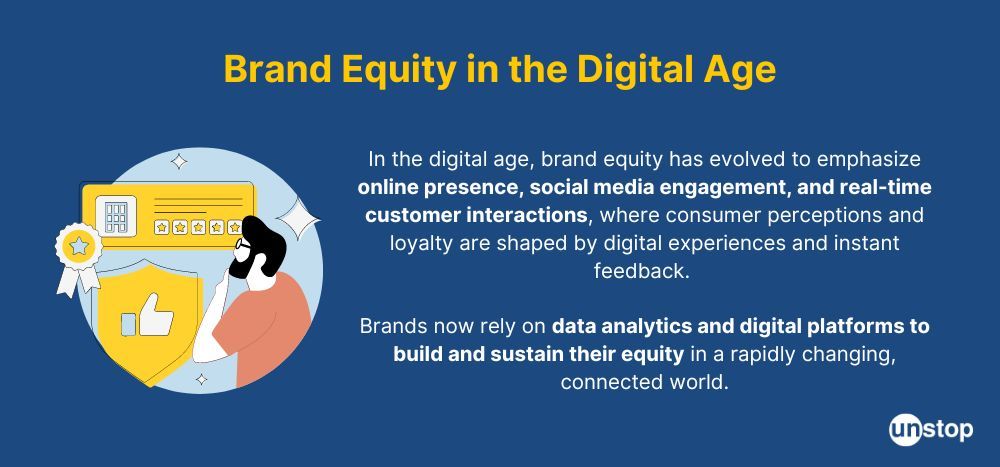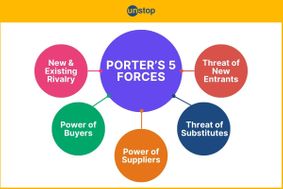- What is a Brand & Why is it Important?
- Elements of a Brand: Mission, Vision, and Values
- Types of Brands and their Significance
- Branding Strategies: Private, Multiproduct, and Mixed
- Brand Image and Its Impact on Perception
- Building a Strong Brand
- Frequently Asked Questions
- Understanding Brand Equity: Definition and Elements
- Importance of Brand Equity
- Evolution Of Brand Equity In The Digital Age
- Brand Equity in the Global Marketplace
- Measuring Brand Equity: Metrics & Methods
- Managing Brand Equity: Salient Elements
- Building & Managing Brand Equity: Best Practices
- The Future of Brand Equity
- Conclusion
- Frequently Asked Questions
- What is Brand Management?
- Importance of Brand Management
- Benefits of Effective Brand Management
- Principles of Brand Management
- Strategies for Successful Brand Management
- Brand Management vs. Marketing
- Conclusion: The Power of Brand Management
- Frequently Asked Questions
- Importance of Brand Image in Marketing
- Key Elements of a Successful Brand Image
- Brand Image vs. Brand Identity: Key Differences
- Measuring and Monitoring Brand Image
- Strategies for Maintaining and Enhancing Brand Image
- The Power of a Positive Brand Image
- FAQs
- What is Brand Awareness and its Importance?
- Benefits of Brand Awareness
- Brand Awareness Strategy: Some Tried & Tested Methods
- Some Creative Ways to Boost Brand Awareness
- Significance of Brand Awareness
- Conclusion
- Frequently Asked Questions
- Porter's 5 Forces Model: What Is It?
- Porter's 5 Forces Model: How To Use It?
- Common Barriers to Entry
- Evaluating Suppliers' Negotiating Power
- Understanding the Bargaining Power of Buyers
- Analyzing Threat of Substitute Products or Services
- Rivalry amongst Competitors (Old & New)
- Drawbacks of the Five Forces Model
- Conclusion
- Frequently Asked Questions
- How Well Do You Know Porter’s 5 Forces? Take A Quiz!
- What is Buying Motive?
- Types Of Buying Motives
- Importance Of Buying Motives
- Six Universal Buying Motives
- Identifying Buyer's Motives
- Utilizing Buying Motives In Sales
- Challenges In Interpreting Buying Motives
- Frequently Asked Questions (FAQs)
- 💸 Think You Know Buying Motives? Take A Quiz!
- Understanding the Elements and Importance of Brand Equity
- What are brand equity models?
- Comparing Keller's and Aaker's brand equity models
- Real-world examples of brand equity in action
- Strategies for building strong brand equity
- Key takeaways on brand equity models
- FAQs
- Mastered Brand Equity Models? Prove It!
- What Is Brand Positioning?
- The Importance of Brand Positioning for Businesses
- Creating A Brand Positioning Strategy: Step-By-Step Process
- Measuring the Success of Your Brand's Positioning
- Examples of Strong Brand Positioning in the Market
- Types of Brand Positioning Strategies
- Social Media Engagement: A Key Positioning Strategy
- What Makes a Good Brand Positioning Strategy?
- Conclusion
- Frequently Asked Questions
- Quick Quiz to Test Your Knowledge of Brand Positioning!
- Brand Personality: Definition & Importance
- How to Define Your Brand Personality?
- Choosing Your Brand Personality Attributes
- Dimensions of Brand Personality Framework: The Aaker Model
- Incorporating Core Values Into Your Brand Personality
- Examples of Brand Personalities in Action
- Conclusion
- Frequently Asked Questions
- Brand Personality Quiz– Let's Go!
- What is Brand Identity?
- What are the Key Components of Brand Identity?
- Importance & Benefits Of Brand Identity
- Importance of Unique Visual Elements in Brand Identity
- Communication Style and Tone of Voice in Brand Identity
- Steps on How to Create a Brand Identity
- Brand Identity Example- Coca-Cola
- Examples of Strong Brand Identities in Different Industries
- Consistency in Online and Offline Branding
- Conclusion
- Frequently Asked Questions (FAQs)
- Think You Know Brand Identity? Take A Quiz!
- Brand Identity Prism: Understanding The Concept
- Role Of Culture In Brand Identity Prism
- Brand Identity Prism: Visualizing The Sender & Receiver
- Benefits Of Brand Identity Prism
- Examples Of Brand Identity Prism In Action
- Brand Identity Prism: Key Takeaways
- Frequently Asked Questions
- Take This Brand Identity Prism Quiz!
- What is Market Segmentation?
- Importance of Market Segmentation
- The Market Segmentation Process
- Types of Market Segmentation
- Common Challenges in Implementing Market Segmentation
- Overcoming Challenges in Market Segmentation
- Conclusion: Understanding The Impact
- Frequently Asked Questions (FAQs)
- Test Your Market Segmentation Knowledge– Take This Quiz!
- What is Brand Loyalty? Meaning & Significance
- Characteristics of Brand Loyalty
- Measuring and Tracking Brand Loyalty
- Importance of Brand Loyalty for Companies
- Brand Loyalty Examples and Types
- Strategies for Building Brand Loyalty
- Differentiating Brand Loyalty from Customer Loyalty
- Conclusion: The Power and Importance of Brand Loyalty
- Frequently Asked Questions
- Think You Know Brand Loyalty? Take A Quiz!
- Brand Extension Meaning
- Brand Extension Types
- Understanding Brand Line Extension vs. Brand Extension
- The Impact and Potential of Brand Extension
- Successful and Unsuccessful Brand Extensions Examples
- Summing Up
- Frequently Asked Questions
- Quiz– Test Your Brand Extension!
- Step-by-step guide on how to build a brand from scratch
- Benefits of a Strong Brand
- Examining Successful Brand-Building Examples
- Summing up
- Frequently Asked Questions
- Know How to Build a Brand? Prove it With This Quiz!
- What is Marketing Mix?
- Understanding the 4 Ps of Marketing
- The Seven Ps of Marketing
- Implementing the Marketing Mix in Business
- Amul: Example of Successful Marketing Mix Implementation
- Exploring Alternative Marketing Mix Models
- Conclusion
- Frequently Asked Questions (FAQs)
- Mastered the Marketing Mix! Test Your Knowledge Now
- Defining Brand Value and its Importance
- Measuring Brand Value
- Factors that Make a Brand Valuable to Customers
- Examples of Brand Value from Real World
- Brand Value Versus Brand Equity
- The Impact of Brand Value on Business Marketing Strategies
- Conclusion: The Significance of Brand Value
- Frequently Asked Questions
- How Much Do You Know About Brand Value? Take This Quiz!
- Definition Of Co-Branding
- Different Types Of Co-Branding
- Benefits & Advantages Of Co-Branding
- Strategies For Successful Co-Branding Partnerships
- Notable Successful Co-Branding Examples
- Factors Influencing Co-Branding Success
- Frequently Asked Questions (FAQs)
- Co-Branding Quiz: Test Your Expertise!
- What is a Target Market?
- Importance of Target Market: Why Do We Need It?
- Types of Target Market
- The Target Marketing Process
- Primary Research for Target Markets
- Leveraging Target Market Segmentation for Sales
- Conclusion
- Frequently Asked Questions (FAQs)
- 🎯 Do You Know Your Target Market? Take the Quiz!
- Importance of Understanding Consumer Decisions
- Traditional vs Contemporary Consumer Behaviour Model
- Traditional Models of Consumer Behaviour
- Learning Model of Consumer Behaviour
- Psychoanalytical Model of Consumer Behaviour
- Sociological Model of Consumer Behaviour
- Economic Model of Consumer Behaviour
- Contemporary Models of Consumer Behaviour
- EKB Model of Consumer Behaviour
- Black Box Model of Consumer Behaviour (Stimulus-Response Consumer Behaviour Model)
- Howard Sheth Model of Consumer Behaviour
- Hawkins-Stern Model of Consumer Behavior
- Webster and Wind Model
- Nicosia Model of Consumer Behaviour
- How to Select a Consumer Behaviour Model?
- Final Remarks
- Frequently Asked Questions
- 🛍️ Consumer Behavior Models Quiz: Test Your Knowledge!
- What is a Consumer?: Definition & Role
- The Evolution of the Term "Consumer"
- Consumer Behavior
- Different Types of Consumers
- Consumers' Motivation for Buying
- Relationship Between Businesses and Consumers
- Consumer Rights in India
- Current Challenges for Consumers
- The Future of Consumers in a Digital Age
- Final Remarks
- Frequently Asked Questions (FAQs)
- 🛍️ Consumer or Customer? Test Your Knowledge!
- What is a Market Structure?
- Types of Market Structures
- How Markets Work
- Significance of Different Types of Market
- Summing Up
- Frequently Asked Questions
- 🏪 Market Structures 101: Take the Quiz!
- Understanding the Concept of Corporate Branding
- Importance and Advantages of Corporate Branding
- Researching Competitor Brands
- Implementing Effective Corporate Branding Strategies
- Successful Corporate Branding Examples: Alphabet, Walmart & SAP
- Impact and Success of Corporate Branding
- Conclusion
- Frequently Asked Questions
- 🏢 Corporate Branding Quiz: Test Your Knowledge!
- Perception Management: Meaning & Importance
- Process Of Perception Management
- Influencing & Shaping Perceptions
- Strategies For Perception Management
- Technology In Perception Management
- Branding & Control In Perception Management
- Customer Feedback For Perception Improvement
- Frequently Asked Questions (FAQs)
- 🧠 Perception Management Quiz: How Well Do You Know It?
- Definition & Importance Of Target Marketing
- Advantages & Disadvantages Of Target Marketing Strategies
- Examples Of Target Marketing Strategies
- Creating An Effective Target Market Strategy
- Segmentation: Key To Targeted Marketing
- Utilizing Social Media For Targeted Marketing
- Frequently Asked Questions ( FAQs)
- 🎯 Target Marketing Strategies Quiz: Test Your Knowledge!
- Definition and Significance of Brand Association
- Brand Association Types
- Successful Brand Association Examples
- Strategies for Building Strong Brand Associations
- Overcoming Negative Brand Associations
- Conclusion: Harnessing the Power of Brand Association
- Frequently Asked Questions
- 🔗 Brand Association Quiz: Check Your Brand Knowledge!
- What is Product Positioning?
- Importance Of Product Positioning in Marketing
- Difference between Product Positioning and Brand Positioning
- Types Of Product Positioning
- Main Components Of Product Positioning
- Successful Product Positioning Strategies
- Understanding the Product Positioning Process
- Examples Of Effective Product Positioning
- Conclusion
- Frequently Asked Questions (FAQs)
- 🔥 Product Positioning Quiz: Test Your Marketing Smarts!
- How do we define niche market?
- Strategies To Find Your Niche Market
- 7 Examples Of Niche Markets
- Benefits Of Targeting A Niche Market
- Testing Your Product Or Service For Niche Market
- Conclusion
- Niche Market: Frequently Asked Questions (FAQs)
- 🎯 Niche Market Quiz: Test Your Knowledge!
- Importance Of STP In Marketing
- Understanding STP in Marketing Step-by-Step
- Process Of Implementing STP In Marketing
- Examples Of Successful STP Strategies
- Conducting An STP Marketing Analysis
- Choosing Your Marketing Mix
- Strategies For Targeting the Right Audience
- Conclusion
- Frequently Asked Questions (FAQs)
- 🔍 STP in Marketing Quiz: Test Your Knowledge!
- Sales and Marketing: Understanding the Core Concepts
- Key Differences Between Sales and Marketing
- Types of Marketing
- Types of Sales
- Power of Synergy: Sales and Marketing Alignment (Smarketing)
- Frequently Asked Questions (FAQs)
- Definition Of Customer Satisfaction
- Importance Of Customer Satisfaction
- Strategies For Effective Customer Satisfaction
- Measuring Customer Satisfaction
- Customer Satisfaction in Marketing & Sales
- Frequently Asked Questions (FAQs)
- 🎯 Customer Satisfaction Quiz: Are You an Expert?
- Customer Delight Meaning
- Benefits of Customer Delight
- Customer Satisfaction Vs Customer Delight
- Strategies With Customer Delight Examples
- How to Measuring the Impact Of Customer Delight?
- Customer Delight Examples - 3 instances by big brands that won hearts
- Common Mistakes In Customer Delight
- Conclusion
- Frequently Asked Questions (FAQs)
- 🌟 Customer Delight Quiz: Can You Ace It?
- What is a Marketing Plan?
- Types Of Marketing Plan
- What are the Key Components of a Marketing Plan?
- Steps for Effective Marketing Planning
- Crafting Your SEO Content Strategy
- Budgeting & Resource Allocation
- Identifying & Analyzing Competition
- Measuring Success with KPIs
- Importance of Flexibility in Marketing Planning
- Challenges of Marketing Plan
- Marketing Plan vs Business Plan
- Conclusion
- Frequently Asked Questions (FAQs)
- 📊 Marketing Planning Quiz: Test Your Knowledge!
- What is Marketing Control?
- Types of Marketing Control (with Examples)
- Annual Plan Marketing Control
- Profitability Marketing Control
- Efficiency Marketing Control
- Strategic Marketing Control
- Process of Marketing Control
- Techniques Used in Marketing Control
- Frequently Asked Questions
Brand Equity: Definition, Importance, Key Elements & Examples

In today's competitive marketplace, a strong brand is more than just a logo or a tagline. It's a powerful asset that can drive customer loyalty, command premium pricing, and withstand market fluctuations. Brand equity is the intangible value that a brand holds in the minds of consumers. It's the perception and reputation that customers associate with a brand, influencing their purchasing decisions and overall loyalty.
This article will delve into the key components of brand equity, explore strategies to build and maintain a strong brand, and discuss the significant benefits it offers to businesses.
Understanding Brand Equity: Definition and Elements
Definition
Brand equity represents the perceived value of a brand in the marketplace, including both tangible and intangible assets. It’s the value a brand adds to a product or service beyond its functional benefits, which can lead to customer loyalty, premium pricing, and competitive advantage.

Key Elements
Brand equity encompasses several elements:
- Brand Awareness: The extent to which consumers recognize and recall a brand.
- Brand Associations: The connections and qualities consumers associate with the brand, including emotional, functional, and symbolic attributes.
- Perceived Quality: The consumer's perception of the overall quality or superiority of a product or service associated with the brand.
- Brand Loyalty: The commitment of consumers to repurchase or continue using a brand, often driven by positive experiences or emotional attachment.
- Brand Assets: Patents, trademarks, and relationships that contribute to a brand's value.
In sum, brand equity is the premium value that a company derives from having a recognizable and strong brand compared to a generic equivalent.
Remember: The perceived value offered by brand equity can translate into financial benefits, but it's not solely defined by monetary assets.
Importance of Brand Equity
Brand equity is crucial for businesses as it impacts various aspects of a company's success. Here are some key reasons why brand equity is important:
1. Higher Customer Loyalty
- Repeat Business: Strong brand equity fosters customer loyalty, leading to repeat purchases and long-term relationships with customers.
- Customer Advocacy: Loyal customers are more likely to become brand advocates, spreading positive word-of-mouth and referring others to the brand.
2. Ability to Charge Premium Prices
- Price Premium: Brands with strong equity can command higher prices because customers perceive their products or services as more valuable or of higher quality.
- Reduced Price Sensitivity: Customers are less sensitive to price changes and more willing to pay a premium for a brand they trust and value.
3. Increased Market Share
- Competitive Advantage: Strong brand equity gives a company a competitive edge in the marketplace, making it easier to capture and retain market share.
- Customer Preference: Consumers are more likely to choose a well-known brand over lesser-known alternatives, even if the latter is less expensive.
4. Easier Launch of New Products
- Brand Extensions: Companies with strong brand equity can more easily introduce new products or services under the same brand name, leveraging existing customer trust and recognition.
- Reduced Marketing Costs: The existing positive perception of the brand can reduce the need for extensive marketing efforts when launching new products.
5. Resilience to Competitive Threats
- Brand Loyalty Buffer: Strong brand equity can protect a company from competitors' actions, as loyal customers are less likely to switch to other brands.
- Crisis Management: Established brand equity can help a company recover more quickly from negative events or crises, as customers are more forgiving.
6. Increased Negotiating Power
- With Retailers: Brands with strong equity often have better negotiating power with retailers, who are more inclined to give them prominent shelf space or favorable terms.
- With Suppliers: Strong brands can also negotiate better deals with suppliers due to the volume and consistency of their business.
7. Attracting Top Talent
- Employer Branding: Companies with strong brand equity often have a strong employer brand, making it easier to attract and retain top talent.
- Employee Loyalty: A reputable brand can also foster employee pride and loyalty, contributing to higher employee engagement and productivity.
8. Financial Performance and Company Value
- Increased Revenue: Strong brand equity typically leads to higher sales and profitability due to loyal customers, premium pricing, and efficient marketing.
- Higher Valuation: Brand equity contributes to a company’s overall valuation. Investors often view companies with strong brands as less risky and more likely to generate consistent returns.
- Perception of Quality: A brand with high equity is often perceived as offering superior quality, which can influence purchasing decisions.
9. Facilitates Business Expansion
- Global Reach: Companies with strong brand equity can expand into new markets more easily, as brand recognition and reputation can transcend geographic boundaries.
- Diversification: Brand equity allows companies to diversify their offerings, entering new product categories or industries with greater confidence and consumer acceptance.
10. Long-Term Business Success
- Trust: Strong brand equity builds trust with consumers, which is crucial for long-term success and customer relationships.
- Surviving Disruptions & Downturns: A well-established brand with high equity can better survive economic downturns or industry disruptions. Customers trust established brands more readily during uncertain times because they have built credibility and reliability over time.
Evolution Of Brand Equity In The Digital Age
In the digital age, brands have more opportunities to connect with consumers across various platforms, resulting in significant changes in building and managing brand equity.
In today's social media age, reviews and ratings are key to building consumer trust. Positive reviews can attract new customers, while negative reviews can severely damage a brand. By generating compelling content, responding to customer inquiries, and actively participating in conversations, brands can foster strong customer relationships, build brand loyalty, and boost brand equity.
Brands used to rely on traditional channels like TV and print to reach their audience. Digital channels now offer more opportunities for meaningful interactions. Differentiation is crucial - unique products and exceptional customer experiences can help brands stand out. A well-optimized website provides information and a platform for direct engagement.
User-friendly interfaces should offer seamless navigation and relevant content. The evolution of technology has played a vital role in shaping brand equity in the digital age by allowing personalized experiences and targeted advertising.

Brand Equity in the Global Marketplace
Adapting To Cultural Nuances
When expanding brand equity globally, it's essential to recognize that what works in one market may not necessarily work in another. Cultural nuances significantly shape consumer behavior and perceptions. Businesses need to be mindful of these differences when developing their branding strategies.
A key challenge lies in striking the right balance between maintaining a consistent brand identity while also tailoring it to fit local cultures. This requires careful research and understanding of each target market's values, beliefs, and customs. By adapting marketing messages, visuals, and even product offerings to align with cultural preferences, companies can build stronger connections with consumers worldwide.
Localization Strategies
Localization strategies involve customizing marketing materials, packaging, slogans, and even product names to resonate with local audiences. By speaking directly to consumers in their own language and incorporating familiar or appealing elements within their culture, brands can establish trust and credibility more effectively.
One approach is transcreation, which involves adapting creative content while preserving its intent across different languages. This ensures that the emotional impact of messaging remains intact regardless of the target audience's language or cultural background. Leveraging local influencers or ambassadors who embody the brand values can help bridge gaps between cultures and enhance brand perception.
Global Partnerships Or Sponsorships
Building international brand equity often involves forming strategic partnerships or sponsorships on a global scale. Collaborating with well-established local brands or organizations can provide valuable opportunities for exposure and market penetration. By associating themselves with respected entities within specific markets, companies can leverage the partner's existing brand equity and reputation to gain a competitive edge.
Measuring Brand Equity: Metrics & Methods
Gaining a deep understanding of how consumers perceive a brand is absolutely crucial for businesses:
Surveys and focus groups are highly effective methods to collect valuable insights on a brand's attributes, level of trust, recognition, and loyalty among its target audience. These methods enable companies to gauge their brand's strength in the market with precision.
Market share and customer loyalty are critical metrics used to measure brand equity. A higher market share and repeat customers are clear indicators of a brand's superiority over its competitors, thus signifying strong brand equity.
Repeat purchases also serve as an indicator of strong brand equity. When customers consistently buy from a particular brand, it signifies their confidence in its quality and value proposition. This behavior showcases the positive reputation and emotional connection that the brand has established with its target audience.
Financial valuation methods provide quantitative measures for evaluating brand equity. The Interbrand ranking and Forbes rankings are two widely recognized approaches used to quantify the value of a brand financially. These rankings consider factors such as financial performance, customer perception, and overall market influence to assign a monetary value to each brand.
The Interbrand ranking assesses brands based on their financial performance, role in driving consumer choice, and ability to command premium prices or secure earnings for the parent company. It provides an annual list of the most valuable global brands across various industries.
Similarly, Forbes ranks brands by estimating their net worth by analyzing revenue data along with other financial metrics like operating income and profit margins. This methodology allows businesses to compare themselves against industry peers while gaining insights into how they can enhance their own brand equity.
By utilizing these financial metrics alongside consumer-focused surveys and market indicators like market share and customer loyalty rates, companies can gain a comprehensive understanding of their brand equity.
Managing Brand Equity: Salient Elements
Consistent Messaging
Maintaining a consistent message across all marketing channels helps establish a strong and recognizable brand identity. Whether through social media, advertisements, or packaging design, using consistent language, visuals, and tone creates a cohesive brand experience for customers. This consistency allows consumers to easily identify and connect with the brand, fostering trust and loyalty.
Positive Customer Experiences
Creating positive customer experiences is another crucial element in building and managing brand equity. This can be achieved through exceptional customer service, personalized interactions, and delivering on brand promises. By consistently exceeding customer expectations, brands can build a loyal customer base that not only continues to support the brand but also becomes an advocate for it.
Continuous Monitoring
Managing brand equity requires continuous monitoring of consumer perceptions. Brands must stay updated on how their target audience perceives them in order to make necessary adjustments or improvements.
Regularly collecting feedback through surveys, social media listening tools, or focus groups can provide valuable insights into consumer sentiment towards the brand. By actively listening to their audience and promptly addressing any concerns or issues, brands can maintain a positive image and strengthen their relationship with customers.
Learn From Example: How Brand Equity Impacts Profit Margin
A brand with high perceived value can charge more for its offerings, leading to increased profit margins. Consumers are willing to pay a premium for a brand they trust, as they believe it reflects superior quality or unique features. Businesses with strong brand equity can set higher prices and still attract paying customers. Take these examples:
- Luxury fashion brands like Gucci or Louis Vuitton can charge higher prices due to their strong brand equity. Positive brand associations make customers less sensitive to price fluctuations and more likely to choose trusted brands over cheaper alternatives.
- Apple's brand image is associated with cutting-edge technology and sleek design. Loyal customers trust the brand's commitment to quality and innovation, despite higher prices. Strong brand equity fosters customer loyalty through emotional connections.
Building & Managing Brand Equity: Best Practices
It is absolutely crucial for businesses to maintain consistency in their visual elements, messaging, and customer experience in order to reinforce their brand identity and create an indelible impression on their consumers.
Furthermore, storytelling is an unequivocally effective strategy for building brand equity. By sharing compelling narratives about the brand's history, values, or impact, companies can establish strong emotional connections with their target audience and foster a deeper and more meaningful relationship between the brand and consumer.
Working with influencers or joining forces with established brands can significantly boost a company's credibility and contribute to the growth of its brand value. Endorsements from influencers bring a sense of trust and authenticity to products or services. Collaborating with well-established brands can also help expand the reach of a company and gain exposure to new audiences.
Take the example of Coca-Cola:
Consistency: Its iconic red color, distinct script font, and memorable tagline "Open Happiness" have remained constant over the years. These visual elements have become synonymous with Coca-Cola's brand identity and are instantly recognizable worldwide.
Storytelling: Its ads evoke emotions by showing people bonding over Coke. This builds a strong brand identity.
Partnerships: Coca-Cola's sponsorships at events like the FIFA World Cup and the Olympic Games reinforce its global beverage leader status while reaching millions of viewers.
The Future of Brand Equity
In the ever-evolving world of marketing, brand equity continues to be a crucial factor for businesses. As we look ahead, it becomes evident that several trends will shape the future of brand equity.
- Virtual/ Augmented (VR/AR) is revolutionizing brand experiences, connecting businesses with consumers in immersive ways. By integrating this tech into marketing strategies, brands create unforgettable experiences that leave lasting impressions. VR/AR transports consumers to virtual worlds where they can explore, try out products, or participate in simulated events, building trust, and loyalty, and ultimately driving sales.
- User-generated content (UGC) is critical in shaping brand perception and influencing brand equity. Brands that encourage UGC benefit from increased authenticity and credibility, as consumers trust the opinions of their peers more than traditional advertising messages. UGC also provides an opportunity for brands to engage directly with their audience, fostering a sense of community and strengthening brand equity.
- Ethical practices and social impact will become increasingly important factors for consumers when evaluating brands. As society becomes more conscious about sustainability, diversity, inclusivity, and corporate responsibility, businesses need to align themselves with these values if they want to resonate with future consumers. Consumers are actively seeking out brands that prioritize ethical sourcing of materials, support fair labor practices, and contribute positively to society.
Conclusion
In conclusion, brand equity plays a crucial role in the success and longevity of a business. It encompasses the value and perception that consumers attach to a brand, which can directly impact their purchasing decisions and loyalty. Through this article, we have explored various aspects of brand equity, from its definition and significance to key elements for building and managing it effectively.
Quiz Time!!!
Frequently Asked Questions
1. How long does it take to build brand equity?
Building brand equity is not an overnight process; it requires time and consistent effort. The timeline for developing strong brand equity varies depending on industry competition, marketing budget allocation, target audience receptiveness, and overall strategy implementation. On average, a business can take several years to establish solid brand equity.
2. Can small businesses benefit from building brand equity?
Absolutely! Building brand equity is essential for small businesses, as it helps them stand out in crowded markets and gain customer trust. By focusing on creating unique value propositions, consistently delivering exceptional products or services, providing personalized experiences, and actively engaging with customers through various channels, small businesses and entrepreneurs can cultivate strong brand equity that drives growth.
3. Is social media important for enhancing brand equity?
Social media platforms offer immense opportunities for businesses to enhance their brand equity. With billions of active users worldwide, social media allows brands to connect with their target audience directly, build relationships, and showcase their values and personality. Businesses can effectively enhance their brand equity through social media by consistently sharing engaging content, responding to customer inquiries promptly, and leveraging influencer partnerships.
4. How can businesses measure brand equity?
Measuring brand equity involves analyzing various metrics such as brand awareness, customer loyalty, market share, and perceived quality. Businesses can conduct surveys, track website analytics, monitor social media mentions and engagement levels, analyze sales data, and utilize other market research techniques to gain insights into the strength of their brand equity.
5. What are some common challenges in managing brand equity?
Managing brand equity comes with its own set of challenges. Some common obstacles include maintaining consistency across all touchpoints and communication channels, adapting swiftly to changing consumer preferences and market trends, effectively differentiating from competitors in saturated markets, and ensuring that the brand's image aligns with evolving customer expectations over time.
Suggested Reads
- What Is A Brand?: Find Its Meaning, Types, Importance & More In This Detailed Guide
- Brand Management: Definition, Strategies, Principles & Benefits Explained
- MBA in Marketing: Eligibility, Syllabus, Careers Scope & More!
- Self Branding is the most important thing you will do for your professional self!
Alekhya Chakrabarty is a father, a doodler, a trivia buff, a sports fanatic and a lifelong student of marketing. Alekhya is the VP of Marketing & Growth at Unstop, the engagement and hiring platform which connects students and graduates with opportunities. He has over a decade and a half of experience in driving revenue and building brands with the likes of Nestle, HUL and ITC. He is an alumnus of IMT Ghaziabad and in his last stint he was leading the marketing function at Sunstone, a higher education startup. Alekhya has been recognised as a ‘Top Voice’ on LinkedIn for Digital Marketing & Brand Management. He runs a marketing podcast titled East India Marketing Company to drive conversations around growth, content, culture and commerce.
Login to continue reading
And access exclusive content, personalized recommendations, and career-boosting opportunities.
Subscribe
to our newsletter
















Comments
Add comment